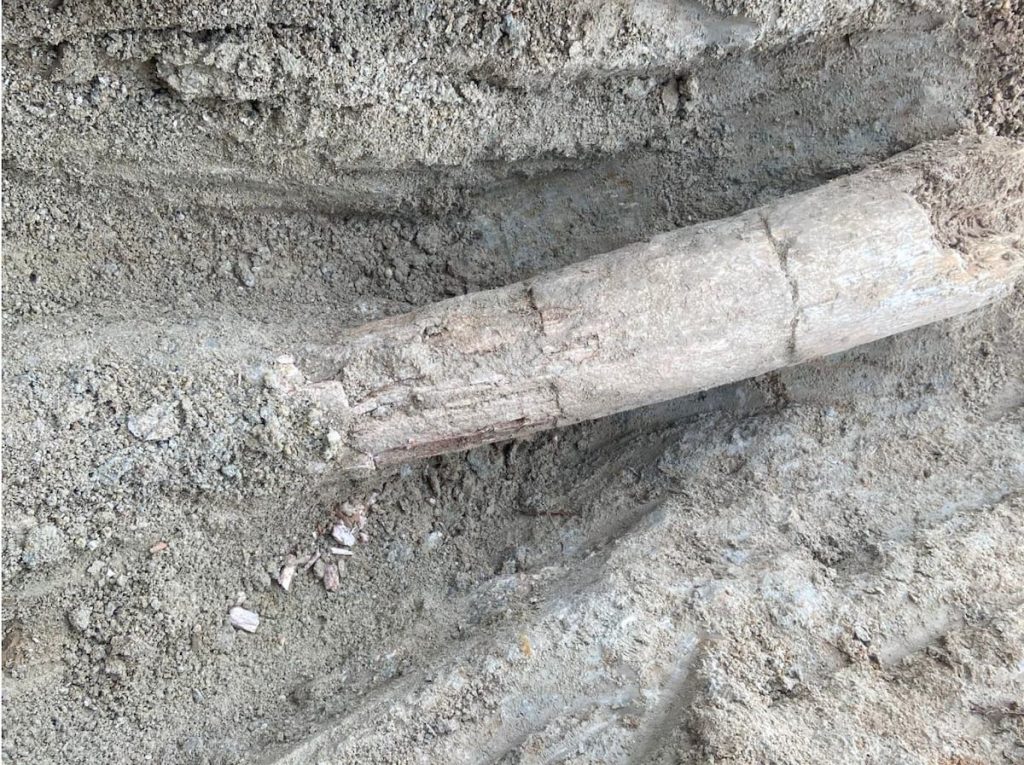The last times an elephant was seen in Valladolid were due to the visit of world circuses with these pachyderms among their cast, before the ban on the exhibition of these wild animals in those shows. The most recent sighting, and partial, corresponds to the discovery of a fossilized elephant tusk in the urban park of the Las Contiendas hill. The bone relic was found by one of the walkers or athletes who regularly walk among these hills with paths, exercise machines, or picnic tables. The alert to the authorities allowed for initial work that determined that the piece is thousands of years old, although the exact number is unknown, and is fossilized without organic remains, although it will be examined carefully to determine exactly what it is and when it is from. The tusk is still in Las Contiendas, although away from the access of walkers.
The discovery, reported by Diario de Valladolid and protected in a hidden location in this wooded area of Valladolid, has attracted the attention of citizens and awaits for specialized technicians from the regional council of the Junta of Castilla y León (PP) to proceed with its extraction for a more thorough analysis. The first actions have confirmed the shape of the tusk of a pachyderm, fractured into three connected parts, and under that fossilization that points to a millennia-old age, although currently difficult to categorize specifically. The process followed with these valuable historical remains implies that they will be transferred to the Fabio Nelli Provincial Museum, in the city center, a few kilometers from the hill where the bone remains have been located. Spokespersons from the Department of Culture of the Junta state that “it seems to have value, but from Heritage they will have to extract the piece and analyze it to calculate its age and value.”
Culture describes the appearance as follows: “Specifically, on one of the accessible bike paths of that hill, the action of rainwater has exposed an elongated object with a circular section, with dark veins, which tapers and which, in its opinion, resembles a large horn or an elephant tusk.” The presumed fossil was located a few days ago, and the Administration has hired a specialized company for these tasks to remove it from the hill and determine its characteristics. “We must be cautious,” these spokespersons conclude, who have refused to indicate the exact location of the vestige “because there is a lot of vandalism and one must be careful.” Therefore, to avoid risks, Culture is providing the photo of the possible bone remains and has prevented photographers from the media from approaching that place and taking their own images.
The evidence and initial features suggest a “high value” of the discovery, but only scientific evidence will clarify whether it is indeed the fossilized tusk of a millennia-old elephant or a mistake. “Apparently, it is a horn or a defense of an animal, with a remarkable age, since it has completed its fossilization process. The material is not organic, but, as observed in some detached splinters, its structure is already completely mineral (limestone or calcium carbonate),” adds the Junta’s statement, which provides a key insight into the discovery: “It should be noted that it is partially buried by the clays of the geological deposit that surrounds it. It is not possible to determine if only this piece exists or if it is related to other skeletal parts that could correspond to the same animal.”


